007/50: The Bondathon reviews (1960s #2)
.
There’s no rest for the wicked, folks, nor is there for a writer of (ahem) wicked reviews as he blogs his way through a ‘Bondathon’ (a chronologically arranged Bond movie marathon) timed to conicide with the cinematic icon‘s 50th anniversary and release of its 23rd official adventure on the silver screen, Skyfall. That comes in late October; the latest instalment (read the first here) of my Bond film reviews – the mid- to late ’60s efforts: Casino Royale (unofficial spoof), You Only Live Twice and On Her Majesty’s Secret Service – comes right now…
.
How it works:
- The ‘Bondathon’ takes in all 24 cinematically released Bond films, from Dr No (1962) right through to Quantum Of Solace (2008) – including the ‘unofficial’ efforts Casino Royale (1967) and Never Say Never Again (1983)
- The reviews consist of 10 categories, the inclusion of which tend to define a Bond film as a Bond film (‘Plot‘, ‘Bond‘, ‘Girls‘, ‘Villains‘, ‘Action‘, ‘Humour‘, ‘Music‘, ‘Locations‘, ‘Gadgets‘ and ‘Style‘), each of which are rated out of 10, thus giving the film in question a rating out of 100 – which ensures all 24 films can be properly ranked
- There’s also an ‘Adjuster‘ for each film’s rating (up to plus or minus five points) to give as fair as possible a score according to its overall quality as a film.
.
.
.
Directed by: Val Guest, Ken Hughes, John Huston, Joseph McGrath, Robert Parrish and Richard Talmadge; Produced by: Charles K Feldman and Jerry Bressler; Screenplay by: Wolf Mankowitz, John Law and Michael Sayers – very loosely adapted from the Ian Fleming novel (1953); Starring: Peter Sellers, Ursula Andress, David Niven, Orson Welles, Woody Allen, Deborah Kerr, Joanna Pettet, Barbara Bouchet and Daliah Lavi; Certificate: PG; Country: UK/ USA; Running time: 131 minutes; Released: April 13 1967; Worldwide box-office: $41.7m (inflation adjusted: $282.7m ~ 24/24*)
* denotes worldwide box-office ranking out of all 24 Bond films (inflation adjusted), according to 007james.com
.
.
As a spoof of the 1960s Bond films, Casino Royale‘s plot is utterly nuts. Retired superspy Sir James Bond is brought back into the fold by former boss M/ McTarry, whom dies accidentally, to investigate why so many spies are being bumped off. Journeying to McTarry’s Scottish ancestral seat, he foils an attempt on his life by SMERSH – the KGB’s murder wing. Thus, in assuming control of MI6 he decides the situation so dire all British agents must now adopt the ‘James Bond 007’ moniker to confuse the enemy. He then hires, first, baccarat expert Evelyn Tremble, via mercenary Vesper Lynd, to defeat SMERSH operative Le Chiffre from raising funds by beating him at the French-set ‘Casino Royale’ and, second, his own daughter Mata Bond to infiltrate ‘Mother’s International Help’, supposedly the SMERSH HQ in Berlin. But he eventually discovers the real SMERSH chief is his nephew and former agent Jimmy Bond, whose main aim is to make all women fall in love with him and kill all men taller than him. Muddled and messy, Casino Royale‘s story is very difficult to follow and makes little sense, but then that’s arguably totally intentional.
Where to start? Given so many characters in Casino Royale are ‘James Bond 007’ we could be here all day. For the sake of brevity and sense though, I’ll focus on just two: David Niven’s real Sir James Bond and Peter Sellers’ Evelyn Tremble, the film’s most featured and obvious Bond stand-in. Niven’s Bond is actually rather engaging and interesting. A distinguished elder English gentleman and yet world-weary (he still hankers after real-life WWI-era spy Mata Hari whom he sent to a firing squad), this may be no Fleming’s 007, but allows Niven to show-off much of the charm, wit and quiet heroism of many of his best roles; think Phileas Fogg in Around The World In 80 Days (1956). But, again, this isn’t Bond – and Sellers’ Tremble certainly isn’t either. He’s also charming and witty, but owing to script problems – and Sellers’ own – an inconsistent creation, whose role in the narrative (like so many others’) doesn’t altogether make sense.
.
.
Obvious mention on the girls front should go to Ursula Andress’s Vesper Lynd. Honey Ryder-sexy and just as duplicitous as the literary Vesper, she’s one of the film’s better characters; although use of Andress’s real voice here makes clear why she was dubbed for Dr No. The totty quotient is filled out by a mature but lovely Deborah Kerr going all Scots as Lady McTarry/ Agent Mimi; Daliah Lavi as a smart, sassy MI6 operative; beautiful Barbara Bouchet as Moneypenny’s daughter; Jacqueline Bisset as SMERSH agent Miss Goodthighs; future ‘proper’ Bond Girl Angela Scoular as the bath-tub-warming Buttercup and a blink-you’ll-miss-it cameo from ’70s Eon lovely Valerie Leon. But the best of the bunch has to be Swinging Sixties ‘It Girl’ Joanna Pettet as Mata Bond, offspring of Sir James and Mata Hari. Wonderfully willowly, while capturing a mocking tone of mid-’60s Mod cool (and often only wearing the almost-theres of a belly dancer), she comes across in the actually satirically satisfying Berlin sequence as a Cockney Modesty Blaise.
Unlike Casino Royale‘s girls, its villains are pretty much instantly – and thankfully – forgettable. Ostensibly the chief baddie, Orson Welles as Le Chiffre seems perfect casting; the reality’s far from it. Given the film’s incongruously various plot strands, the SMERSH heavyweight doesn’t actually have a hell of a lot of screen-time nor then does he exert much menace. Moreover, as Welles and Sellers found they simply couldn’t get on, their scenes together were filmed while only one of either thesps was present so they didn’t have to face the other. Plus, Welles’ inexplicable penchant for performing magic tricks adds a head-scratching bizarreness to the already strong sense of the surreal. The real villain of the piece, of course, is Woody Allen’s Dr Noah (aka Jimmy Bond). Although one of the movie’s most consistently amusing elements and his villainous reveal wryly Wizard Of Oz-esque, Noah/ Jimmy ultimately ensures its daft and deeply unsatisfying conclusion – and no Bond film should have one of those.
.
.
Given this flick’s spoof aspirations, it’s supposed to be all about the gags (supposed to be), thus action‘s at a premium. The most obvious and lengthy example of this facet is the climax at ‘Casino Royale’. Sadly, it’s one of the weakest points of the entire movie – and many might say that’s saying something. Utterly ridiculous, it begins as a pastiche of a pointless saloon brawl and – fittingly then? – escalates into an all-out battle involving cowboys arriving as if on a cavalry charge and, via look-at-this! deus ex machina, Indians (wearing ‘007’ warpaint) parachuting into proceedings from an overhead plane. It’s obviously all supposed to be absurd anarchy, but none of it’s funny, just embarassing. More successful is earlier on when Sir James’s vintage car is pursued from Scotland to London by a bomb-carrying milk-float, which is operated via remote-control by lovelies at SMERSH control as if the chase is a Scalextric race. Silly but entertaining.
What stumps this movie in the humour stakes – and ultimately stumps the movie as a whole, given it’s clearly a comedy – is the rampant inconsistency. Several official Bond films are inconsistent, sure, but in this supposed spoof inconsistency is a disease. For every decent witticism (Bond to Moneypenny Jr: “Your mother did some of her best work at night”), every useful one-liner (“Which side do you dress on?”/ “Away from the window”) and every good visual gag (Woody Allen jumping over a wall to escape a firing squad only to land in another one on the other side), there’s that slapdash, broad brushstroke, too-many-cooks (or directors) approach that results in inexplicable cameos from Jean-Paul Belmondo, George Raft and even Frankenstein (although a cameo from Peter O’Toole does work – see below for his line) and that truly dreadful closing battle. In the end, Casino Royale needs to be funny, but it isn’t nearly enough.
.
.
At times, though, this film is very nearly saved by its music. All hail then the melodic genius that is Burt Bacharach. His score features themes that mostly fall into two categories. The first is jaunty, mock music-hall fare, which is used very effectively as backing for the most ridiculous British establishment and spy-work p*ss-take scenes; its greatest exponent being the Casino Royale Theme, performed by Herb Alpert And The Tijuana Brass (a chart hit in the States) and sung by Mike Redway over the closing credits. The second category are the lush, luxurious melodies that accentuate the glamour and style of the movie’s look, especially during Vesper’s ‘seduction’ of Tremble, over which the Oscar-nominated, all-time classic Dusty Springfield-sung The Look Of Love plays, as well as during Mata Bond’s introduction, which is accompanied by the awesome second half of Sir James’s Trip To Find Mata (click on image above to hear it).
In spite of some of its posters boasting Casino Royale is packed full of exotic locations, the only significant on-location filming I’m aware of took place in the Scottish Highlands (and at times the Irish countryside, standing in for its celtic counterpart). Still, the sequence in which the Highlands etc. feature is amply rewarded by this atmospheric backdrop (SMERSH’s opening attempt on Sir James’s life where he’s aided by Agent Mimi). Moreover, the use of just a single location is the least of Casino Royale‘s faults – after all, rightly neither the very good spy spoofs that are Austin Powers: International Man Of Mystery (1997) or OSS 117: Cairo, Nest Of Spies (2006) are criticised for their lack of stunning locales.
.
.
Pastiching the largesse of the Eon Bonds as it tries to, Casino Royale features many larger-than-life gadgets. But all of ’em are predictably OTT and pretty irritating. The most memorable is the dippy two-way TV wrist-watch that Tremble’s issued with when he joins MI6 and with which Sir James communicates with Vesper (just as she gets out of the shower so he sees everything, obviously). There’s also exploding hats and Union Jack-emblazoned bullet-proof vests hiding several silly weapons in the flick’s ‘Q’s Lab’ scene. The villains too have their fair share of gadgetry, including the bomb-carrying mik-float (mentioned above) and, of course, Dr Noah’s atomic bomb-containing pill that blows up every character come the film’s very end. Ultimately, though, if the opening scene’s to be believed, one of Casino Royale‘s aims is to mock (in the words of Sir James) the ‘joke shop spies’ of Bond and his ilk, but as the flick goes on, it seems happy enough to wallow in the light entertainment that gadgets provide just as much as its Eon targets.
In addition to its music, Casino Royale‘s other highlight is its look. The film’s interiors, designed by Michael Stringer, are fantastic. While the narrative meanders all over the shop, characters are introduced then dropped a second later and many a gag falls flat, the audience’s eyes are at least bamboozled by the warm reds and oranges of the outlandishly celtic McTarry Castle, Mata Bond’s opulent Indian hideaway and the marvellously surreal interior of Dr Noah’s HQ, with its swirling psychedelic patterns and dizzying, rotating rooms. There’s also the fine filmic in-joke of ‘Mother’s International Help’ looking just like the sets from classic horror The Cabinet Of Dr Caligari (1920). And the outstanding spy-fi-mocking style also extends to the costumes, from Sir James’s elegant tweeds and gentleman’s suits to Vesper’s wispy nightgown and glorious ballgown and from the SMERSH girl minions’ kinky outfits to Mata’s belly-dancing gear.
.
Adjuster: 0
Reviewing Casino Royale as if its a Bond film may be a little unfair, as it isn’t really one. Having said that, reviewing it simply as a film gives one a headache too, as it doesn’t work as one of those either. More a collection of sequences stringed together by a very loose (read: dreadful) narrative, this is an overblown, messy failure of a spoof, yet an intriguing curiosity of the Swinging Sixties that’s worth checking out for its flambouyance and engaging atmos. If only once.
.
.
Best bit: The introduction of Mata Bond
Best line: Peter O’Toole (in cameo): “Are you Richard Burton?”/ Sellers (as Tremble): “No, I’m Peter O’Toole”/ O’Toole: “Then you’re the greatest man that ever breathed”
.
Read the brilliant and bizarre story on how Casino Royale came to the screen here
.
.
.
.
.
.
.
Directed by: Lewis Gilbert; Produced by: Harry Saltzman and Albert R Broccoli; Screenplay by: Roald Dahl – loosely adapted from the novel by Ian Fleming (1964); Starring: Sean Connery, Akiko Wakabayashi, Tetsurō Tamba, Mie Hama, Teru Shimada, Karin Dor, Donald Pleasence, Bernard Lee, Desmond Llewelyn, Lois Maxwell, Ronald Rich and Tsai Chin; Certificate: PG; Country: UK/ USA; Running time: 117 minutes; Colour; Released: June 12 1967; Worldwide box-office: $111.6m (inflation adjusted: $756.5m ~ 4/24*)
.
.
Plot-wise and otherwise, You Only Live Twice marks the first time the Bond films go (almost) stratospheric. A US manned space rocket has been literally swallowed by another malevolent spacecraft and the Americans blame the Soviets. The Ruskkies plead innocence and the Brits (as mediator) agree with them, claiming the new spacecraft came down near Japan. In fact, their ‘man in Hong Kong is working on it right now’. In fact, he – Bond, of course – is not; he’s faking his own death to give him more elbow room to investigate the mystery. 007 travels to Tokyo and, via a quickly offed MI6 contact, discovers industrial giant Osato Chemicals is producing rocket fuel, which (thanks to the work of Japanese SIS and its head, the cool ‘Tiger’ Tanaka) he finds out may’ve been dropped off at a volcanic island. Assuming the identity of a local fisherman, he unearths the site of the secret spacecraft launches (it’s since gobbled up a Soviet one too): a hollowed-out volcano. And who’s behind it all? Good old SPECTRE chief Blofeld, who wants to push the US and USSR to war so China can emerge as the new and only world power, for which the latter will reward the white pussycat-stroker handsomely. Overblown, but wonderful nonsense.
If Connery didn’t really want to play Bond in Thunderball, two years on in Twice it’s patently obvious he doesn’t. The ’67 Connery has let it go, figuratively and literally – not only has he given in to the on-set of middle-age on his waist line, he also doesn’t work hard in the role. Sure, he’s committed still to the physicality of Bond (he’s just as impressive in the fight scenes as he always was), but he isn’t to the dialogue. And yet, even if his acting and reacting lacks impetus, this is still Connery as Bond; there’s still the confidence and cool, as well as the wryness when he enjoys a funny line. But the bottom line is Connery doesn’t want any more to play a character everybody knows so well. Indeed, in an in-joke even everyone in the Bond universe knows who is by now – his ‘death’ is reported in a newspaper and when he’s ‘shot’ lying in a bed a Hong Kong policeman (as a mid-coital gag) says: “Well, at least he died on the job – he’d have wanted it this way”.
.
.
Unlike Connery, Twice‘s Bond Girls definitely wanted to be in the movie – one desperately so, but more of that below. The main girl is Bond’s Japanese SIS aide, Aki (Akiko Wakabayashi). She is, in a word, lovely. Sweet, petite, placid and amenable, yes, she may be rather under-written and subordinate, but who cares? As she’s the movie’s ‘sacrificial lamb’, it’s actually moving when she’s bumped off. Once Bond’s on the island, her replacement is the slightly feistier, slightly more active Kissy Suzuki (Mie Hama). She’s top stuff too. There’s also the Fiona Volpe-a-like redhead villainess Helga Brandt (Karin Dor) and the pre-title sequence girl who wants to give Bond ‘best duck’ (Tsai Chin). And the one that wanted desperately to be in the film? That’d be Mie Hama after she was informed she could no longer play Aki (then named Suki) as her English wasn’t good enough; she apparently threatened suicide if a solution couldn’t be found. It was: she and Akiko (whose English was better) saw their roles switched – then, ironically, both were dubbed.
If you have a main villain in the background of previous films, who’s only been an in-and-out shadowy presence, but this time you want him to be the big-time baddie, how do you go about it? The answer’s two-fold. First, you get Donald Pleasence, who does eerily evil to a tee, to play him. Second, you keep up the teasing of the audience by peppering the flick with underling villains (Teru Shimada’s Mr Osato and Karin Dor’s Helga Brandt), whose attempts to off Bond are easily rebuffed by our hero, before in the final third you unleash hell – or, in other words, you finally reveal the face of Blofeld. On both counts then (the casting of Pleasence and the late revelation of 007’s true nemesis of four previous movies as a diminutive, bald-headed scarface, whose cultured, relaxed but menacing demeanour really has been worth the wait ever since Dr No said he existed five years – and films – before), the main villain of this movie is a masterstroke.
.
.
Kaboom! Ironically, Lewis Gilbert – the director best known outside of Bond for his excellent tragi-comic dramas Alfie (1966) and Educating Rita (1983) – loved to end his three Bond flicks with a good ol’ giant battle and, as such 007 film finishes go, Twice is a king among princes. The hollowed-out volcano-set battle that concludes this movie is, frankly, what the entire thing works its way up to and it’s an absolute stonker. Nifty ninjas abseiling down into the lair (some boasting wonderful sword skills, others throwing ninja stars and others still operating as dead-shot snipers) up against dozens of SPECTRE minions – oh, what’s not to love? Explosions galore and more intimate hand-to-hand combat too, this is what big Bond action is all about, all right. Yet this arguably isn’t even the best slice of action in the movie, which has to be the air-bound scrap between the gadget-laden gyrocopter Little Nellie and its waspish bigger cousins, which one-by-one and oh-so coolly to the backing of the Bond Theme, the former swats out of the sky. And, let’s not forget, there’s the terrific skirmish too between Bond and the goon in Osato’s office during which they use the furniture to fight each other. It’s like the best visit to Ikea ever.
Not all of writer Roald Dahl’s witty gags work (some fall flat owing to poor delivery, such as Bond making no issue of contact Henderson stirring his vodka Martini), but others certainly do – 007’s reaction to Tanaka’s positivity about Japanese SIS’s rocket fags: “It could save your life this cigarette”/ “You sound like a commercial”; Blofeld’s insistence that, with so many screens in his control room, you can watch his ‘war’ unfold “on TV”. Twice is a funny film and much of it’s down to Dahl’s trademark macabre and inventive humour – Blofeld dispatching failed employees via a foot pedal-operated breaking bridge over a piranha pool and Tiger getting rid of goons by picking up their car with a giant magnet suspended below a helicopter and then dropping the car in the sea (“How’s that for Japanese efficiency?”/ “It’s just a drop in the ocean”). The movie’s OTT and it nicely mocks itself for being so (à la 1964’s Goldfinger), like every such Bond film should.
.
.
Approaching the peak of his powers (at least those of his early career), composer John Barry delivers a score for Twice that knocks it out of, yes, the hollowed-out volcano. He takes the cool, urgent, brass-driven action-accompanying sounds of From Russia With Love (1963) and Goldfinger, introduces a full-orchestral, epic sound and weaves in Oriental-inspired, plucked string- and sax-featuring, but elegant stylings to concoct an awesome score that elevates the film, at times, to true greatness (especially when the visuals are the incredible volcano set). In fact, all three of those ingredients to Twice‘s music blend together perfectly in the ebullient, luscious and brilliant Fight At Kobe Dock/ Helga (click on the above image to hear it). Oh, and let’s not forget, there’s the little matter too of the title theme sung by Nancy Sinatra, which is easily one of the best of the series and still a player in pop culture today – it was sampled in Robbie Williams’ chart-topper Millennium (1998) and memorably closed the final scene of this season’s Mad Men.
Producers Broccoli and Saltzman decided in the midst of the ‘Bondmania’ phenomenon of the Goldfinger/ Thunderball period they had to go and make a film in Japan asap because the adoration for the screen 007 was perhaps more intense there than anywhere else on earth. But another reason behind their decision must have been the fact that when it comes to Bond film locations, Japan pretty much has it all. On the one hand, there’s the sleek, modern, neon urbanity of Tokyo (which ironically perhaps felt even more cosmopolitan Western in some ways than much of America and the UK at the time – or, at least, it looks that way in Twice), while on the other, there’s the vistas of the paradisiacal volcanic islands where the second half of the film takes place. In a contest measuring what single countries have offered Bond in terms of locales, Japan may be unbeatable. Additionally, the flick takes in Hong Kong in the pre-titles, which is also where Bond’s ‘funeral at sea’ takes place (and for which Gibraltar doubles for a few seconds).
.
.
All hail Wing Commander Ken Wallis, formerly of the RAF, for it weren’t for this mechanically minded trailblazer, the Wallis-WA116 Agile autogyro (aka Little Nellie) wouldn’t exist – for the record, he also flew it in the film. The dinky yellow and white gadget tour de force features rear flame-throwers, front-mounted machine guns, aerial mines and air-to-air heat-seeking missiles. Frankly, with its arsenal, agility and, well, all-round coolness (it also, fictitiously, can be assembled from suitcases – the mind boggles as to how Q got it through customs), the SPECTRE choppers that dare go up against it simply don’t have a chance. Also on the gadgets front, Twice boasts a pocket-sized safe-cracking device, slip-on suction cups for the arms and legs (with which Bond climbs down the inside of the volcano), the aforementioned rocket cigarette and a smart breathing suit in which 007 survives his ‘funeral at sea’ (basically an underwater-like mouth-breather inside a sealed transparent bag, itself inside what seems to be a waterproof mail bag).
If Goldfinger is the series’ most iconic film, then Twice arguably runs it a close second. Thanks to the combination of Ken Adams’ quite extraordinary volcano set (which cost more than a tenth of the movie’s budget to construct and is unashamedly its piece de resistance) and John Barry’s outstanding score in the movie’s climax, an epic grandeur wafts over the viewer in a way never before experienced watching the series. Add into the mix too the achingly cool mid- to late ’60s look and atmos of a modernist Tokyo, the breathtaking beauty of the Japanese islands and, of course, Donald Pleasence’s Blofeld (there’s a reason why the look of Austin Powers‘ Dr Evil is utterly lifted from him – he’s an icon) and you’ve got a style quotient that’s almost off the chart.
.
Adjuster: -3
Despite definitely delivering on the Bond film formula (check out all those eights-, nines- and 10s-out-of-10s above), You Only Live Twice is far from a perfect film. Connery’s performance is low-rent and it has story issues – Roald Dahl’s script is solid and well-paced, but there are plot holes that the sets, gadgets and score have to cover-up. But, boy, do those three aspects step up to the plate. If there’s one thing this film’s all about then it’s spectacle – and it deals that in spades. It surely takes a hard heart not to be entertained by Twice – and more than twice at that.
.
.
Best bit and best line: Blofeld’s introduction ~ “Allow me to introduce myself, I am Ernst Stavro Blofeld”
.
.
.
.
.
.
.
Directed by: Peter Hunt; Produced by: Harry Saltzman and Albert R Broccoli; Screenplay by: Richard Maibaum – adapted from the novel by Ian Fleming (1963); Starring: George Lazenby, Diana Rigg, Telly Savalas, Gabriele Ferzetti, Ilse Steppat, George Baker, Bernard Lee, Desmond Llewelyn, Lois Maxwell, Bernard Horsfall, Yuri Borienko, Angela Scoular, Catherine Von Schell, Virginia North and Joanna Lumley; Certificate: PG; Country: UK/ USA; Running time: 133 minutes; Colour; Released: December 18 1969; Worldwide box-office: $82m (inflation adjusted: $505.9m ~ 13/24*)
.
.
Vying with Russia as the most Fleming-faithful big screen Bond adaptation, Majesty’s marks the filmmakers’ first attempt to return Bond to his roots after the huge excesses of the preceding flick – a trend that’s repeated itself at least twice since in the series. Having gone on for two years, following the events of Twice, 007’s hunt for Blofeld is closed down by M, much to Bond’s chagrin. So, against orders, our hero goes off after a girl he saved from suicide in the pre-titles – Teresa di Vicenzo (Tracy) – whose father, Marc-Ange Draco, is a crime syndicate chief and whom 007 hopes can inform him of Blofeld’s whereabouts. This Draco agrees to so long as Bond marries his daughter; Bond balks at the idea but falls in love with her anyway, before (posing as a heraldry expert) he infiltrates an allergy clinic in the Swiss Alps run by old baldy, whose scheme this time is to infect the globe with ‘Virus Omega’, which’ll destroy the world food supply and its economy, unless the noble title he’s seeking is accepted. A barmy scheme for sure, but lifted fully from Fleming, as is the potent love story that lies at the heart of the plot and (perhaps 2006’s Casino Royale aside) distinguishes this from every other Bond film as an engaging romantic drama accompanied by action rather than an engaging action drama accompanied by romance.
Something else that distinguishes Majesty’s from every other big screen Bond effort is Bond himself – for the simple reason he’s played by the first actor to replace another in the role, as well as the only actor to have played the role just once (in the Eon series). Yes, this then was George Lazenby’s only crack at 007, but don’t let the naysayers discourage you because he gives it a good stab. While his lack of thesp training shows (he’s clunky in some dialogue-driven scenes), he literally kicks, punches and knees new impetus into the physical prowess and dexterity of the character, making the Connery Bond of Twice look like an over-the-hill heavyweight boxer. Plus, there’s a youthful vigour to this Bond and a boyish twinkle in his eye (which sort of pre-empts Moore) and, most impressive of all, no doubt thanks to playing opposite someone of the calibre of Diana Rigg, some of Lazenby’s best work comes in the demanding emotional scenes. All the same, though, this is a 007 performance that’s rough around the edges and, at times, at its core.
.
.
Is there a stronger Bond movie when it comes to girls than OHMSS ? You’ll be be hard pressed to find one. Why? Mostly because it features the series’ best female character, Diana Rigg’s Tracy. Nowadays, it seems every latest Bond Girl actress suggests hers is the match of 007, when patently none have been – apart from Tracy, who in almost every way was. Smart, witty, glamorous, resourceful, tenacious, cunning, a strong skiier, an excellent driver at speed, useful in a fight, as well as appealingly glass-half-empty and, of course, beautiful in a refined, elegant way, Tracy truly is terrific. Add into the mix her melancholic doomed fate (à la Vesper in Casino Royale) and she has to be top of the Bond Girl Christmas tree. Yet, OHMSS is surely the ultimate for Bond Girls because she’s not its only one. For who could forget Blofeld’s ‘Angels of Death’? The dozen or so Swinging lovelies hypnotised atop his Alp, whom unwittingly will do his bidding once back home. They’re all beautiful and good value, but the main duo, Angela Scoular’s Ruby and Catherine Von Schell’s Nancy are both delicious, so much so that Bond, despite his real romance with Tracy, can’t help but indulge in their delights – oh, the things he does for England…
Inevitably, after the highs of Donald Pleasence’s Uncle Ernst in Twice, the next interpretation of Blofeld (coming as it does in this very next film) is going to be a come-down and Telly Savalas’s take on the SPECTRE chief is just that. Don’t get me wrong, the man who would become Kojak does an admirable job, investing in the cat-lover an energetic, always on-the-go demeanour and impressive physical attributes (this Blofeld skis and bobsleds, but draws the line at curling), as well as giving the character an urbane loucheness in keeping with the schnaps atmosphere of Piz Gloria. But, for all that, he’s some way short of possessing the ‘x factor’ that all the really good Bond villains do. Blofeld’s joined in his quest to join the nobility by the hard, domineering matron-esque Irma Bunt (Ilse Steppat) – a sort of teutonic Hattie Jacques – and lesser minions including Yuri Borienko’s heavy Grunther (whom notably is bested by Tracy come the climax). Ultimately, like their boss, they’re fine, but a bit sub-par when it comes to Bond villainy.
.
.
It’s rare for a successfully plot- and character-driven Bond film to be equally strong when it comes to action, but Majesty’s most certainly is. The tone’s set by a hotel room skirmish between Bond and a Draco goon. It’s no-holds-barred stuff and only concludes when the foe’s head breaks a balustrade (“Gate crasher – I’ll leave you to tidy up”). Midway through the flick comes a pivotal piece of action – one which proved pivotal for the series too – as its the first ski sequence to feature in the movie Bond. A thrillingly dramatic chase down an Alp, at night too, it displays the daring skills of ski ace Willy Bogner (doubling as 007), features terrific cinematography and demonstrates Bond using his wits to evade and do away with his pursuers. It’s swiftly followed by a car chase, as Tracy’s red Cougar leads Bunt’s vehicle through the snow and a stock-car rally (oddly taking place after midnight on Christmas Eve, but hey). Best of all, though, is of course the flick’s double action climax. Double? Yup, first we have Draco and 007’s raid on Piz Gloria via helicopter (during which the latter oh-so coolly slides along the ice firing his gun, oh yes), then comes Bond’s intense bobsled pursuit of Blofeld. Who could ask for more?
Majesty’s royally does the business in the humour stakes thanks to the fact it’s amusing when it comes to the witty, subtle gags (Draco to Bond on Tracy’s seeming indifference to him: “She likes you, I can see it”/ “You must give me the name of your oculist”; Bond on some avuncular advice from Q: “Thank you, Q, but this time I’ve got the gadgets – and I know how to use them”), but it’s also excellent at delivering the broader brushstroke laughs too – many of the scenes involving the girls at Piz Gloria (and Bond/ Bray’s interactions with them) go for the jugular, anticipating the bawdy humour for which the Moore era is most recalled. This then is a Bond film very reflective of its time – an ever growing openness to sex is represented by the Piz Gloria ‘Angels’ and the light, frank humour that follows them around, but it’s still of a time when subtle, dialogue-driven wit filled well-written scripts. In short, humour-wise, it’s the best of both worlds.
.
.
No question, OHMSS‘s music showcases John Barry’s Bond-scoring at its best. Other scores he delivered, such as Twice‘s, are excellent, but none are as consistently excellent as this flick’s. Both the diversity and the quality of its themes are awesome. The title theme itself (lyricless, still to this day a bold first for a Bond film) is a bass-driven, trumpet-flaring, Moog-synthesised, ominious but stirring, ice-cool tune that gets a perfect re-airing as Ski Chase during, yes, the ski chase. As if pre-empting ’70s prog rock, Moogs feature heavily elsewhere too in the almost menacing take on the Bond Theme and in Over And Out, the excellent tension-inducing build-up to the climax. But there’s a general about-turn to the tone of the mid-film music with theatrically blaring brass accentuating the almost Carry On atmos of Bond/ Bray’s dalliances with the Angels (Bond Meets The Girls; Sir Hilary’s Night Out). And brass is the order of the day too in the scene-setting march Journey To Blofeld’s Hideaway, while Battle At Piz Gloria mixes the title theme with full orchestra to soundtrack the climax. Final mention, though, must go to the Louis Armstrong-sung, early-film-featuring We Have All The Time In The World (whose theme is heard poignantly at other times – especially the end), one of the most enduring of all Bond hits.
Locations-wise, Majesty’s is all about the snow. But, hey, there’s absolutely nothing wrong with that when your main locale is the Swiss Alps in winter. Captured breathtakingly by Michael Reed’s cinematography, the Schilhtorn summit (on which sits the revolving restaurant that doubles as Blofeld’s Piz Gloria hideaway, the name it kept for real-life) and surrounding landscape offer bright white vistas that, with John Barry’s music, are truly inspiring – I haven’t yet skied and lived it up in the Swiss Alps, but still want to and it’s all because of OHMSS. By contrast, the tourist-teeming scenes shot in the nearby village Mürren offer a Christmas-time, almost claustrophobic coming-down-to-earth for Bond (sorry for the pun) after his exploits up the Alp, but are utterly irresistible too. Further locations include Bern (Bond’s visit to lawyer Gumbold’s office) and Lisbon and the picturesque Estoril region of Portugal for the early encounters with Draco and the oh-so fateful ending. Perfect all round, quite frankly.
.
.
In keeping with its back-to-Fleming-basics ethos, Majesty’s doesn’t really do gadgets. This was a very wilful decision on the filmmakers’ part to return the character of Bond to one that relies on his wits rather than the latest must-haves from Q-Branch to get him out of tight scrapes – and given how well the flick executes this, as something of an inverse score maybe its points accrued here should actually be higher. Perhaps the best example of this is when 007 is imprisoned in the impressive Piz Gloria room that houses the inner workings of its cable car system. Here, with no gadget to aid his escape, Bond rips the cloth out of his pockets and uses them as gloves as he works his way along the cable running from a giant wheel to the cable car in the snowy outside. It’s a fine, tension-filled scene. The few gadgets that do pop up, though, number a bulky safe-cracker-cum-photocopier that our man uses in Blofeld’s lawyer’s office (while he passes the time flipping through a Playboy), a nifty small camera and, best of all, a SPECTRE-produced make-up set for each of the ‘Angels’ that ensures they can (under hypnosis) spread the ‘Virus Omega’.
Belatedly, the Eon Bonds caught up with Swinging Sixties style in OHMSS. Not only do those ‘Angels’ reflect the youthful, let’s-have-it-all attitude of London Tahn in the mid- to late ’60s, the winter fashions they sport are unquestionably Quant-esque and moddish (none more so than their most prominent member Ruby Bartlett, with her curly boy’s haircut, round spectacles and penchant for cigarette holders). Bond too is rather dandy; the beige and orange togs he wears when apprehended by Draco’s men would have given the Bond of Dr No a nosebleed, but by ’69 seem perfectly en vogue. And even psychedelia finds its way into a 007 flick, with one-time only Bond helmer (but former editor extraordinaire) Peter Hunt turning outside-office fisticuffs into an hallucinogenic zoom-in and echo-heavy fest, Blofeld’s hypnosis of his girls into reminders of Vietnam-era drug experiments and, most memorably, an epic avalanche into a bad LSD trip for Bond and Tracy. All in all then, with the usual offer of aspirational affluence as well (the casino scene is fine old-school glamour), Majesty’s‘ palette is a slice of boldly colourful ’60s cool.
.
Adjuster: +3
For decades dismissed as ‘that one with the Aussie bloke’ that was a flop (in fact, it was the UK’s #1 film of its year – check out its box-office grosses above), On Her Majesty’s Secret Service is one of the greats (if not the greatest?) of the series. If anything, it seems to get better with age. It has everything you could ever want in a Bond film – and more. Including Joanna Lumley. Surely now, like Lummers’ cause du jour the Gurkhas at last have been, it finally deserves to be welcomed into the loving bosom of the British – and wider movie – mainstream?
.
.
Best bit: Bond and Tracy at the ice-rink
Best line: “It’s all right. It’s quite all right, really. She’s having a rest. We’ll be going on soon. There’s no hurry, you see. We have all the time in the world.”
.
Read why On Her Majesty’s Secret Service is one of the ultimate Christmas movies here
.
.
.
Rankings
(All scores out of 100/ new entries in blue/ * denotes a non-Eon Bond film)
1. On Her Majesty’s Secret Service (1969) ~ 90
2. From Russia With Love (1963) ~ 88
3. Goldfinger (1964) ~ 85
4. You Only Live Twice (1967) ~ 84
5. Dr No (1962) ~ 74
6. Thunderball (1965) ~ 70
7. Casino Royale (1967)* ~ 48
.
The James Bond reviews will return…
.


















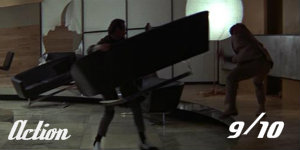



















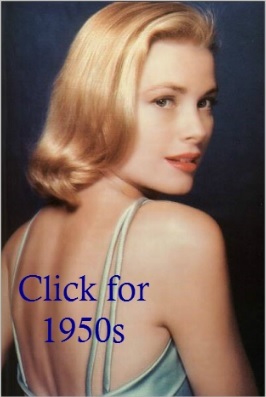

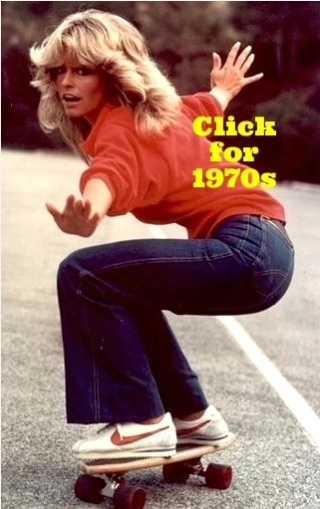
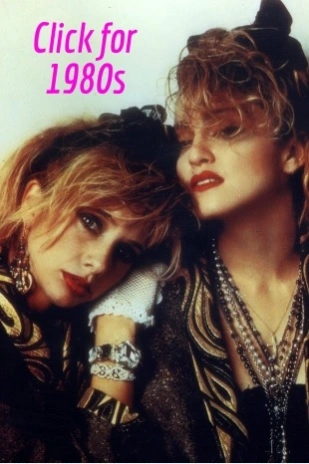

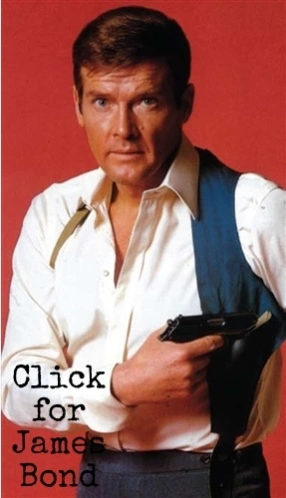

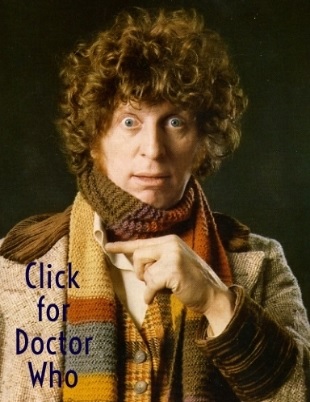
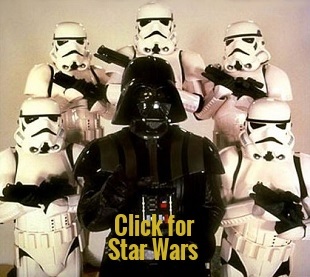

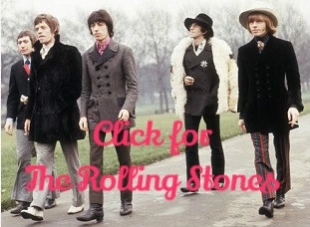


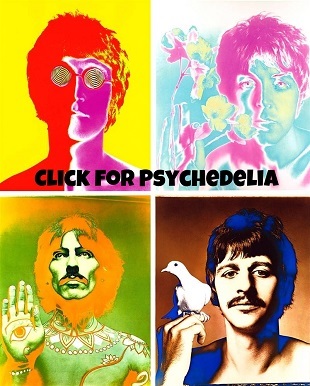





Trackbacks